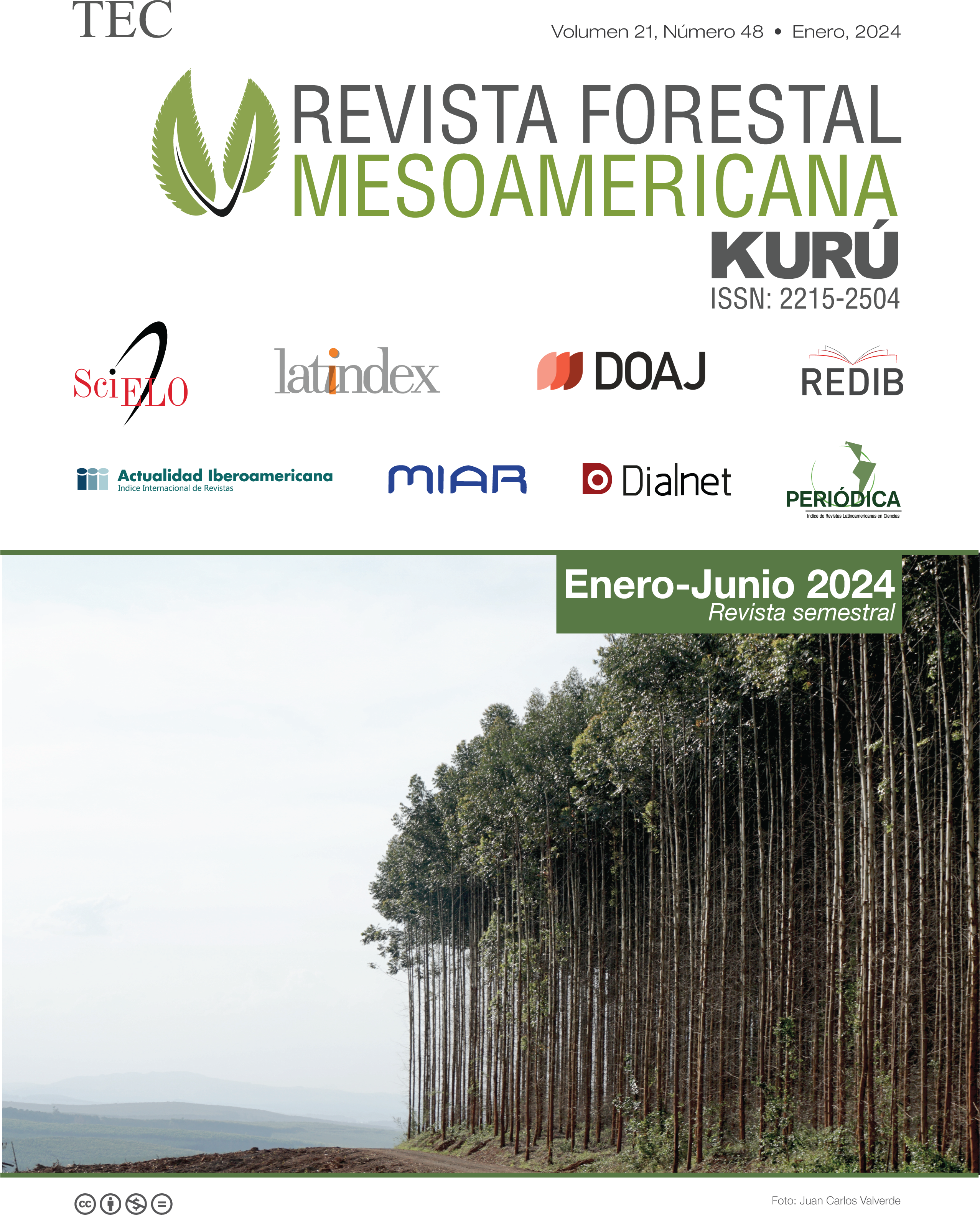Planificación de vuelos y procesamiento de datos de vehículos aéreos no tripulados (VANTs) en el monitoreo de plantaciones forestales.
Contenido principal del artículo
Resumen
El uso de vehículos aéreos no tripulados (VANTs) para el monitoreo de plantaciones forestales es una herramienta potencialmente útil, pero requiere una adecuada planificación. Se evaluaron dos tipos de software, cuatro opciones de procesamiento y cuatro parámetros de vuelo para obtener ortomosaicos en plantaciones forestales ubicadas en Costa Rica. Se encontró que el software Pix4Dmapper® requiere menos tiempo para el procesamiento de imágenes, especialmente cuando el computador utilizado tiene al menos 15 GB de memoria RAM. El número de imágenes a procesar por hectárea se puede disminuir reduciendo la resolución espacial de las imágenes y usando un trazado de vuelo (2D). El software WebODM® produjo más fallos en el procesamiento, pero los ortomosaicos generados tuvieron menos áreas con omisiones que los generados con Pix4Dmapper®. La proporción de fallos en el procesamiento está relacionada con la cantidad de imágenes a procesar y la resolución espacial de las mismas. Las mejores combinaciones para obtener ortomosaicos se obtuvieron usando Pix4Dmapper® con vuelos a 120 metros, empleando un ángulo de cámara de 90° y una combinación de traslape entre imágenes de 80 % frontal y 70 % lateral.
Detalles del artículo

Esta obra está bajo una licencia internacional Creative Commons Atribución-NoComercial-SinDerivadas 4.0.
Revista Forestal Mesoamericana Kurú is licensed under CC BY-NC-ND 4.0
Al enviar un artículo a la Revista Forestal Mesoamericana kurú (RFMK), los autores ceden los derechos patrimoniales a la editorial de la RFMK una vez su manuscrito haya sido aprobado para publicación, autorizando a la RFMK a editarlo, reproducirlo, distribuirlo, y publicarlo en formato físico y/o electrónico. La titularidad de los derechos morales sobre los trabajos objeto de esta cesión seguirá perteneciendo a los autores.

